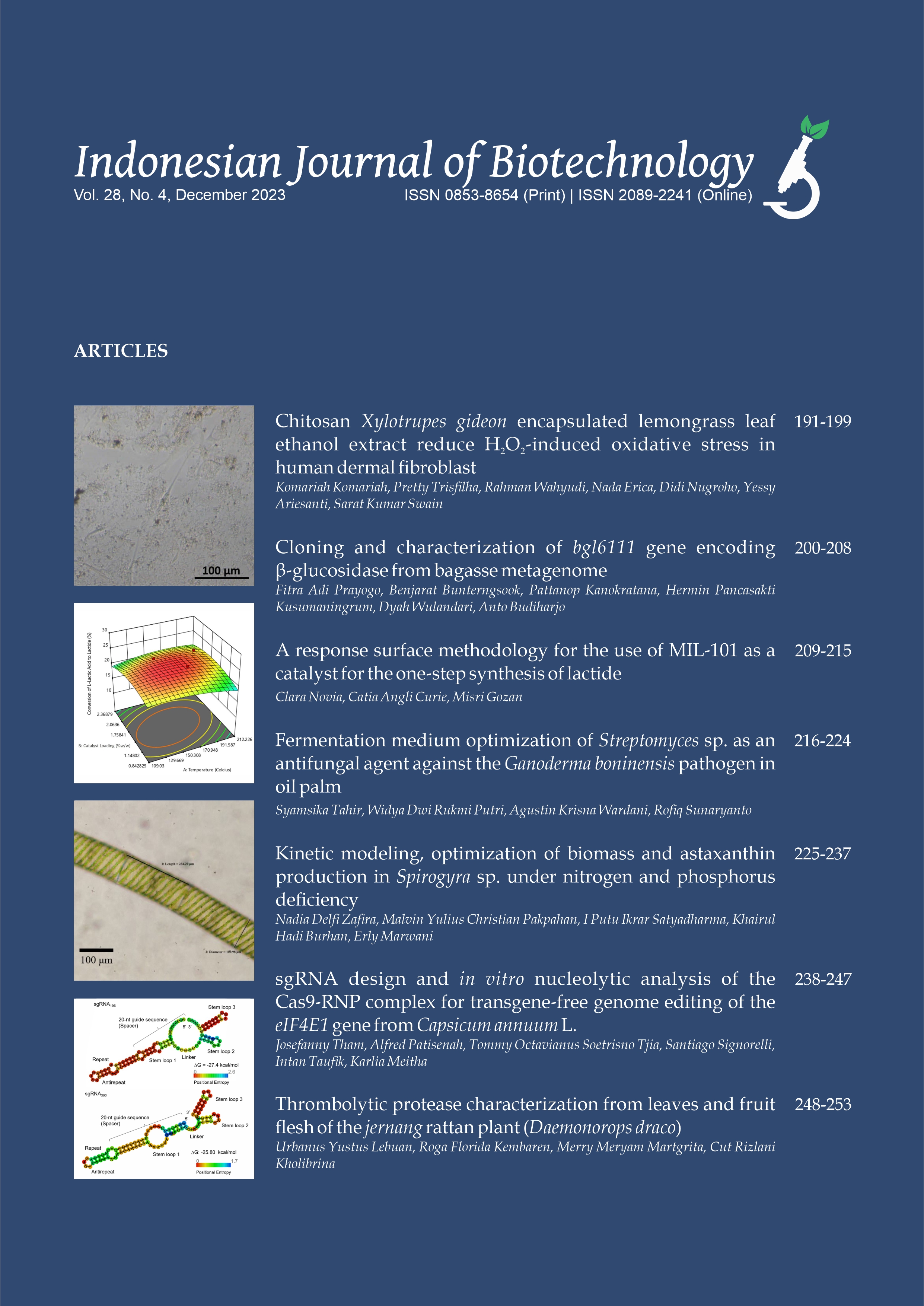Effect of Nuclear Export Inhibitor Leptomycin B on the Intracellular Localization of HBV Core Protein into Hepatocytes Cell Line Huh-7 and HepG2 Cells
Aris Haryanto(1*), Nastiti Wijayanti(2), Michael Kann(3)
(1)
(2)
(3)
(*) Corresponding Author
Abstract
Leptomycin B (LMB) was originally discovered as a potent anti-fungal antibiotic from Streptomyces species. The cellular target of LMB has been identified as the nuclear export receptor CRM-1 or exportin-1, which is involved in nuclear trafficking of cellular RNAs or proteins containing the nuclear export sequence (NES). CRM-1 is the main mediator of nuclear export in many cell types including hepatocyte cell lines. The ability of LMB to inhibit nuclear export has made it a useful tool in the study of the intracellular localization of many
regulatory proteins. In this study, we evaluated the effect of nuclear export inhibitor LMB treatment on the intracellular localization of HBV core protein into the hepatocyte cell lines, Huh-7 and HepG2 cells. We also reported the quantification of the distribution of EGFP-Core fusion protein with redundant core NLS as well as SV-40 NLS into cell compartments. Results shown that in Huh-7 cells treatment of LMB caused retention of EGFP-Core fusion protein into the nucleus, so increased the nuclear localization of EGFP-Core and all variants.
In HepG2 cells, although not significantly, treatment of LMB increased a number of nuclear localization in all EGFP-Core constructions, even the nuclear localization in HepG2 cells is not so high as in Huh-7 cells.
Keywords: Leptomycin B, HBV, core protein, intracellular localization, NLS, Huh-7, HepG2 cell
regulatory proteins. In this study, we evaluated the effect of nuclear export inhibitor LMB treatment on the intracellular localization of HBV core protein into the hepatocyte cell lines, Huh-7 and HepG2 cells. We also reported the quantification of the distribution of EGFP-Core fusion protein with redundant core NLS as well as SV-40 NLS into cell compartments. Results shown that in Huh-7 cells treatment of LMB caused retention of EGFP-Core fusion protein into the nucleus, so increased the nuclear localization of EGFP-Core and all variants.
In HepG2 cells, although not significantly, treatment of LMB increased a number of nuclear localization in all EGFP-Core constructions, even the nuclear localization in HepG2 cells is not so high as in Huh-7 cells.
Keywords: Leptomycin B, HBV, core protein, intracellular localization, NLS, Huh-7, HepG2 cell
Full Text:
PDFArticle Metrics
Refbacks
- There are currently no refbacks.
Copyright (c) 2015 Indonesian Journal of Biotechnology









